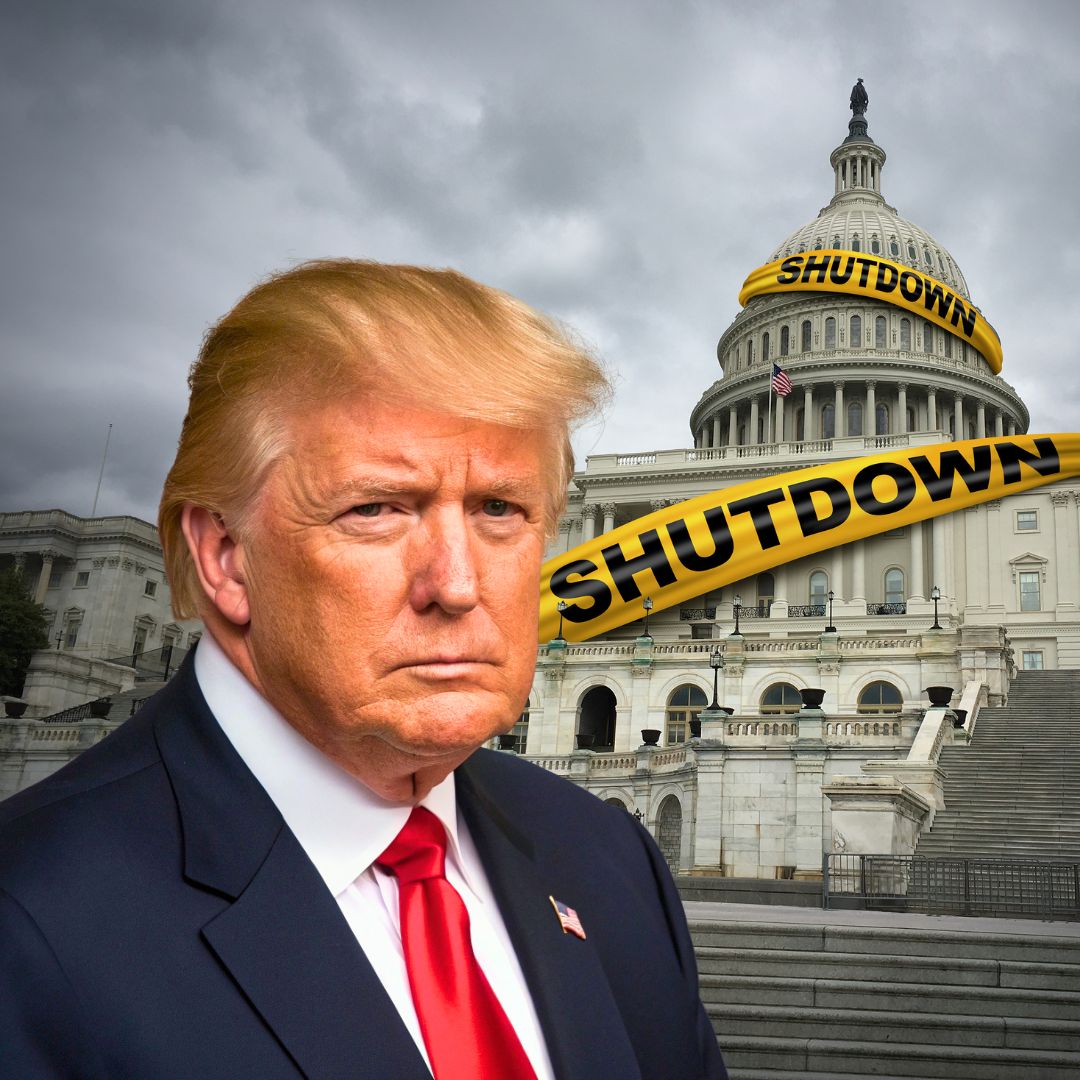The US government officially shut down at midnight on October 1, 2025, after President Donald Trump and Congress could not agree on funding legislation. About 750,000 federal employees are expected to be furloughed, and some may face permanent job losses as Trump’s administration threatens irreversible actions.
Important government services such as immigration, education, and environmental programs face disruptions, while deportation policies are set to accelerate. The shutdown has sparked nationwide economic uncertainty and public concern over its impact on federal workers and citizens dependent on government services.
What is a Government Shutdown?
A government shutdown occurs when Congress fails to pass appropriations bills or temporary funding to finance government operations before the fiscal year ends on September 30. Without approved funding, many federal agencies must cease non-essential functions.
The shutdown forces hundreds of thousands of workers into furlough, halts or delays a range of public services, and affects millions of Americans who rely on federal programs. While essential departments related to national security, law enforcement, and emergency services generally continue to operate, many other services face closures or slowdowns.
Timeline: From Funding Lapse to Shutdown
- September 19, 2025: The House of Representatives passed a temporary spending bill (Continuing Resolution) to fund the government till November 21, 2025.
- September 19, 2025: The Senate rejected both the House bill and a competing Democrat-sponsored bill due to disagreements over health care and tax provisions.
- September 29, 2025: President Donald Trump met with congressional leaders to try and avoid shutdown; talks failed.
- September 30, 2025: The fiscal year ended without an approved budget.
- October 1, 2025, 12:01 a.m. EDT: The government officially shut down, halting many federal programs and furloughing roughly 750,000 workers.
President Trump and Congressional Republicans just shut down the government because they refused to stop your health care costs from rising.
— Kamala Harris (@KamalaHarris) October 1, 2025
Let me be clear: Republicans are in charge of the White House, House, and Senate. This is their shutdown.
What Caused US Government Shutdown?
The main issues leading to the shutdown include disagreements between Republicans and Democrats over spending priorities. Democrats want permanent extensions of health insurance subsidies and oppose Medicaid cuts included in the Republican proposals.
Republicans, backed by President Trump, insist on tighter budget control and oppose changes to new funding laws they passed earlier. Trump has threatened to take “irreversible” steps during the shutdown, including accelerating deportations.
Impacts on Federal Workers and Services
Approximately 750,000 federal employees categorized as non-essential will be furloughed without pay, affecting government offices nationwide. Essential personnel, such as TSA agents and military servicemembers, typically remain on duty but might not receive timely paychecks. National parks, museums, and public landmarks may close partially or fully, impacting tourism and local economies.
Immigration courts and hearings have already been postponed in previous shutdowns, highlighting the disruption to justice services. Economic data releases, including key employment reports, are delayed, impacting markets and policymaking. Additionally, small businesses dependent on federal loans may face funding interruptions.
Political Deadlock and Latest Developments
This shutdown stems from an ongoing partisan impasse concerning funding priorities, especially regarding healthcare, tax policies, and immigration. Democrats insist on extending healthcare tax credits under the Affordable Care Act, while Republicans push for budgetary restraint and cuts.
President Trump signalled a hardline approach, warning that “things that are irreversible, that are bad” may occur, including accelerating deportations during the shutdown. Despite last-minute talks, Congress failed to find common ground, leading to the shutdown being the first in nearly seven years. Both parties blame each other for the impasse, deepening political divisions.
Past Government Shutdowns: A Brief History
Since 1977, the US has had 20 funding gaps or shutdowns, varying in length and impact. The most recent before this was the 2018-2019 shutdown during Trump’s first term, lasting 35 days, the longest in US history.
That shutdown severely affected federal employees and services, with workers struggling financially and some showing up at food banks. It ended after intense public pressure and negotiations.
How Does a Shutdown End?
A government shutdown ends only when Congress passes and the President signs a budget or a continuing resolution to fund government operations. The President cannot end a shutdown unilaterally. Agreements require cooperation between both parties in Congress, which can be challenging when political divisions run deep
The Logical Indian’s Perspective
The Logical Indian believes government shutdowns highlight the urgent need for cooperation and empathy in governance. The harm shutdowns cause to ordinary workers and vulnerable citizens underlines a failure of leadership to prioritise people’s welfare over politics.
Compassion, constructive dialogue, and compromise must replace partisan brinkmanship to ensure essential services continue uninterrupted.
FAQ: What Citizens Should Know
Q. Will I lose my government benefits during the shutdown?
A. Most benefits like Social Security, Medicare, and Medicaid continue, but some services like rental assistance and some health programs might be delayed.
Q. Will federal employees get paid?
A. Furloughed federal employees don’t receive paychecks during the shutdown but typically get back pay after the government reopens. However, the administration warned some layoffs could be permanent if the shutdown lasts long.
Q. Are national parks and museums open?
A. Many national parks and museums close during shutdowns due to lack of funding and staff.
Q. Will TSA and airport security be affected?
A. TSA agents continue working but may face delayed paychecks, potentially causing staffing challenges.
Q. How does the shutdown affect small businesses?
A. Federal loan programs and contracts may be delayed or paused, impacting small businesses that rely on government funding.
Q. How long will the shutdown last?
A. There is no set length; it lasts until Congress and the President agree on funding.











